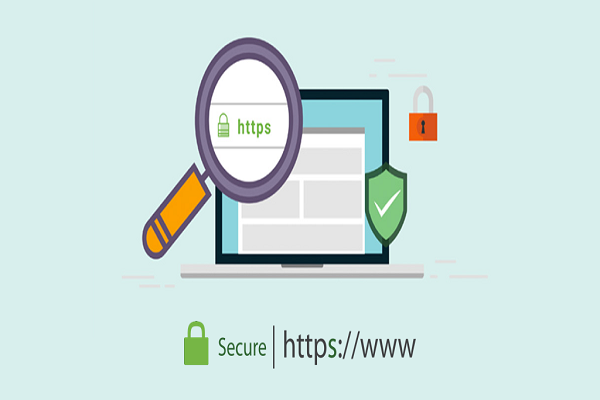Cyber-attacks are on the rise, and practically all organizations are concerned about the protection of their own and their customers' data. Digital certificates are a great approach to improve cybersecurity. It's not uncommon for organizations to rely on digital certificates and cryptographic keys to keep communications secret and secure as well as to remedy any internet security issues.
There is a lot of confusion between SSL certificates and Code signing certificates when it comes to securing web presence. No, that's the solution.
There are some differences between code signing and SSL/TLS certificates, although both use public-key encryption. When it comes to software code integrity, code signing certificates are the way to go, but an SSL certificate protects the safety of the website's content.
Code signing certificate: An approved software publisher can sign executable scripts, code, and content with a Code Signing Certificate to confirm their identity over the Internet. Code and content security is ensured for both software publishers and consumers. It has a 32-bit and 64-bit digital signature.
EV code signing certificate: In addition to the typical benefits of digitally signed code, Extended Validation (EV) Code Signing Certificates also contain an extensive vetting procedure and hardware security requirement, so your users can have even more trust in the integrity of your apps.
SSL certificate
It is a digital file that is used for SSL (Secure Socket Layer) or TLS (Transport Layer Security). It serves two purposes:
Verify a website's or host's identification.
Cryptographic protection of data sent between the browser and a webserver.
SSL certs are available in different validation levels and kinds based on the number of domains secured. Choosing the right kind of SSL certificate is an important step. If you wish to secure multiple level-one domains under the selected main domain then it makes sense to buy and install a SSL Certificate as opposed to investing in separate single-domain SSL certificates for each new subdomain that you wish to add in the future.
Also Read>>>Right Choice of Microsoft Azure Certification
What is the main pointers Code signing and SSL certificate share?
You may compare Code Signing Certs to SSL/TLS Certs, as both are used for digitally signing information to establish that the data (web page content or software package) is coming from "subject". A few examples:
Code signing certificates, like SSL/TLS certificates, are likewise X.509 certificates and rely on Public Key Infrastructure (PKI) (Public Key Infrastructure.)
A security warning appears if an SSL/TLS certificate or a code signing certificate is not installed.
Both forms of certifications require the applicant to be vetted by a certificate authority before they can be issued, regardless of the type of certificate.
This is done to protect users from being the victims of cybercrime.
"Never the twain shall meet," becomes clear when we dive more into these two types of certifications.
Head your eyes towards how Code signing and SSL certificate differ:
Utilization:
Code signing certificate:
It's utilized to protect:
Applications
Scripts
Efforts (.exe)
Drivers for devices
SSL certificate:
It's utilized to secure a website.
Identifies object:
Code signing certificate:
The Object Identifier (OID) for code signing is 1.3.6.1.5.5.7.3.3.
SSL certificate:
The Object Identifier (OID) for SSL/TLS certificates is:
1.3.6.1.5.5.7.3.2 Client Authentication
Authentication on the server: 1.3.6.1.5.5.7.3.1
Consumer:
Code signing certificate: publisher or Software developers
SSL certificate: website owners
Verification process:
Code signing certificate:
The Object Identifier (OID) for SSL/TLS certificates is:
1.3.6.1.5.5.7.3.2 Client Authentication
Authentication on the server: 1.3.6.1.5.5.7.3.1
SSL certificate:
Validation can be divided into three categories:
Validation of the Domain
Validation of the Organization
Validation on a larger scale
Security:
Code signing certificate:
It does not encrypt the software but hashes the software publisher's digital signature and the code. Hashing is analogous to putting a wax seal on a letter by putting a seal on the software code.
SSL certificate:
It encrypts data sent between the website server and the web browser of the user.
On the expiry of certificate:
Code signing certificate:
Even after a certificate expires, you can validate the integrity and validity of software signed with a timestamping service.
SSL certificate:
When an SSL/TLS certificate expires, it becomes invalid and displays a warning message to users.
Other features:
Code signing certificate:
Provides a private key on an external USB drive that acts as two-factor authentication when signing software.
SSL certificate:
For certain Domain Validated, Organization Validated, and Extended Validated SSL/TLS Certificates, a dynamic site seal is available.
Certificates of code signing can be purchased at a lower cost and are also free. The cheap code signing certificates are available on several platforms. Several platforms offer free code signing certificates, as well.
Just like code signing certificates can be bought at a cheap and also at free. You can also buy a cheap SSL certificate from several online providers by cross-checking its features and configurations before purchasing the certificate.
A digital signature, as well as SSL protocol, are needed in today's world of software and website security to guarantee optimum protection to the consumers. Both certificates, as stated above, are valuable in their way.

No comments:
Post a Comment